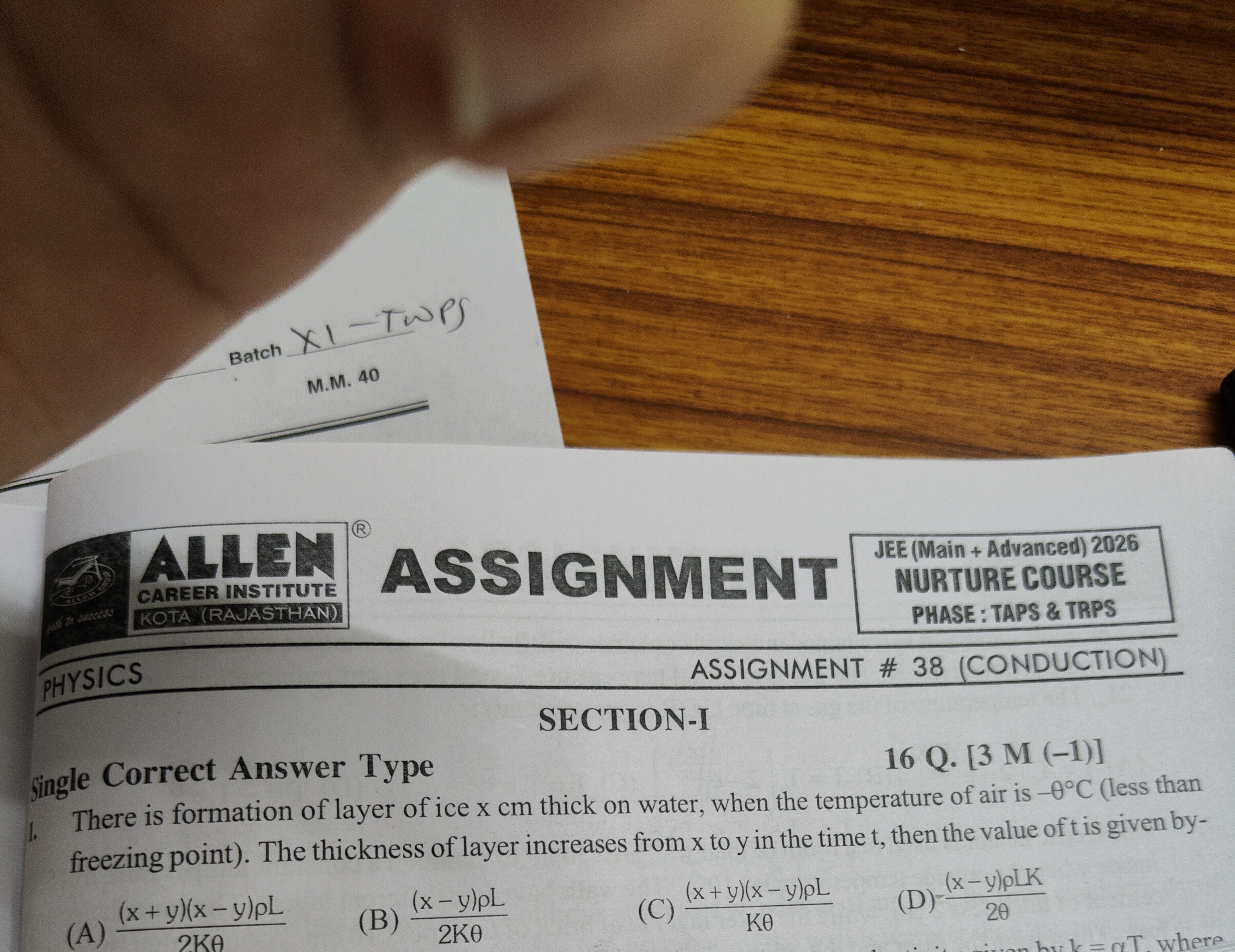Question
Question: There is formation of layer of ice x cm thick on water, when the temperature of air is -0°C (less th...
There is formation of layer of ice x cm thick on water, when the temperature of air is -0°C (less than freezing point). The thickness of layer increases from x to y in the time t, then the value of t is given by-

2Kθ(x+y)(x−y)ρL
2Kθ(x−y)ρL
Kθ(x+y)(x−y)ρL
2θ(x−y)ρLK
2KθρL(y2−x2)
Solution
The rate of heat transfer through the ice layer of thickness X and area A with a temperature difference θ is given by dtdQ=XKAθ. This heat is used to freeze water, so dQ=Ldm=LρAdX. Equating these, we get XKAθ=dtLρAdX. Rearranging gives dt=KθLρXdX. Integrating from t=0 to T and X=x to y, we get T=∫xyKθLρXdX=KθLρ[2X2]xy=2KθLρ(y2−x2). Option (A) is 2Kθ(x+y)(x−y)ρL=2KθρL(x2−y2), which is the negative of the correct answer. Assuming a typo in option (A) where it should be 2Kθ(y+x)(y−x)ρL, it would be the correct answer.
